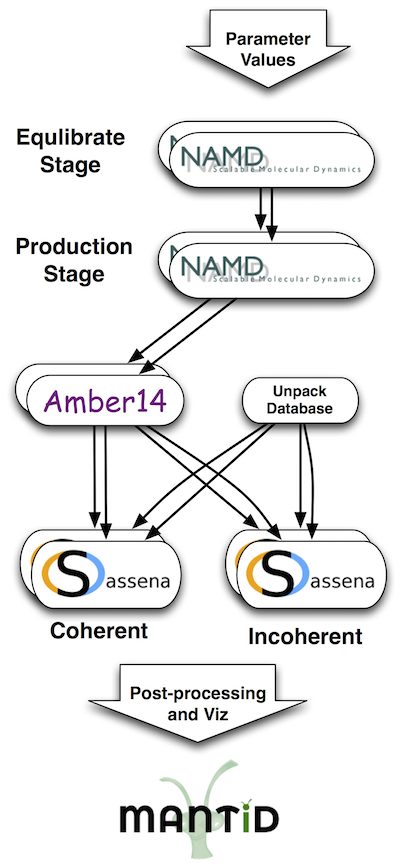 The Spallation Neutron Source (SNS) is a DOE research facility at Oak Ridge National Laboratory that provides pulsed neutron beams for scientific and industrial research. SNS uses a particle accelerator to impact a mercury-filled target with short proton pulses to produce neutrons by the process of spallation. A wide variety of experiment instruments provide different capabilities for researchers across a broad range of disciplines, including: physics, chemistry, materials science, and biology.
The Spallation Neutron Source (SNS) is a DOE research facility at Oak Ridge National Laboratory that provides pulsed neutron beams for scientific and industrial research. SNS uses a particle accelerator to impact a mercury-filled target with short proton pulses to produce neutrons by the process of spallation. A wide variety of experiment instruments provide different capabilities for researchers across a broad range of disciplines, including: physics, chemistry, materials science, and biology.
SNS hosts hundreds of researchers every year who conduct experiments within short reservations of a few days to a few weeks. Providing these researchers with efficient, user-friendly and highly configurable workflows that reduce the turnaround time from data collection to analysis and back is essential to the success of SNS. In the data flow for a typical SNS instrument such as NOMAD, neutron events scattered from the scientific sample under investigation are collected by an array of detectors. These raw events are processed into a representation familiar to the domain scientist depending on the type of experiment. For NOMAD, the reduced form is a powder diffraction pattern. This reduced data is then analyzed and compared to materials simulations to extract scientific information.
In addition to workflows for processing data from SNS experiments, there are also workflows for data analysis and simulation to support and guide SNS experiments, and to validate computer models against experimental data. These workflows automate tedious manual processes to reduce time to solution and improve researcher productivity. In collaboration with the Center for Accelerating Materials Modeling (CAMM) of SNS data, we are adapting a workflow that executes simulations to support experimental design and the validation of molecular models as a use case for the Panorama project. The workflow executes an ensemble of molecular dynamics and neutron scattering simulations to optimize a model parameter value. This workflow is being used to investigate temperature and hydrogen charge parameters for models of water molecules. The results are compared to data from QENS experiments using the BASIS instrument at SNS
An illustration of this parameter refinement workflow is shown here. The workflow executes one batch job to unpack the database along with 5 jobs for each set of parameters. First, each set of parameters is fed into a series of parallel molecular dynamics simulations using NAMD. The first simulation calculates an equilibrium and the second inputs that equilibrium and calculates the production dynamics. Each NAMD simulation runs on 288 cores for 1 to 6 hours. The output from the MD simulations has the global translation and rotation removed using AMBER’s ptraj utility and is passed into Sassena for the calculation of coherent and incoherent neutron scattering intensities from the trajectories. Each Sassena simulation runs on 144 cores for up to 6 hours. The final outputs of the workflow are transferred to the user’s desktop and loaded into Mantid for analysis and visualization.
Scientists: Thomas Proffen